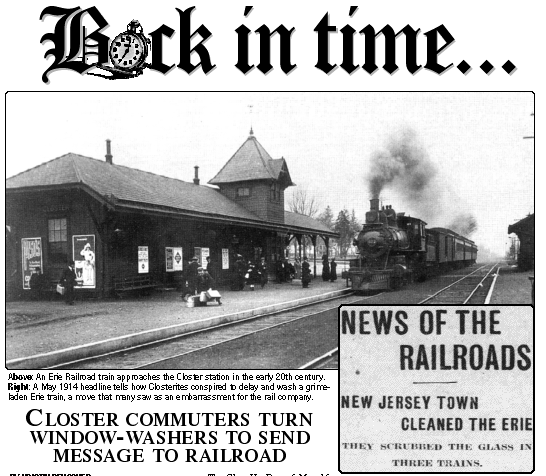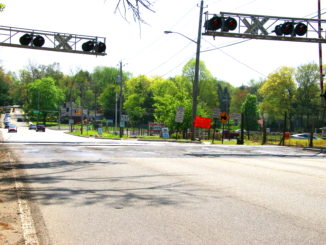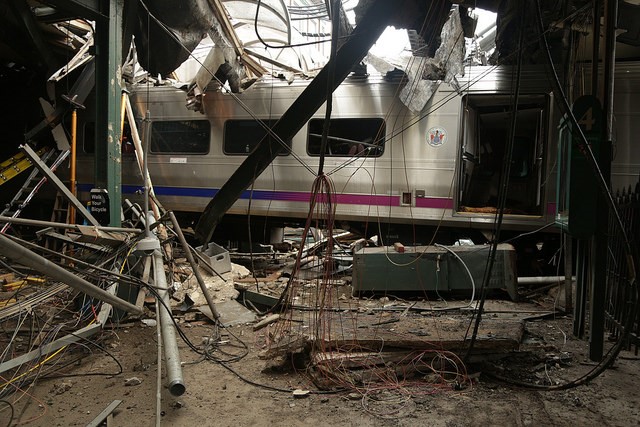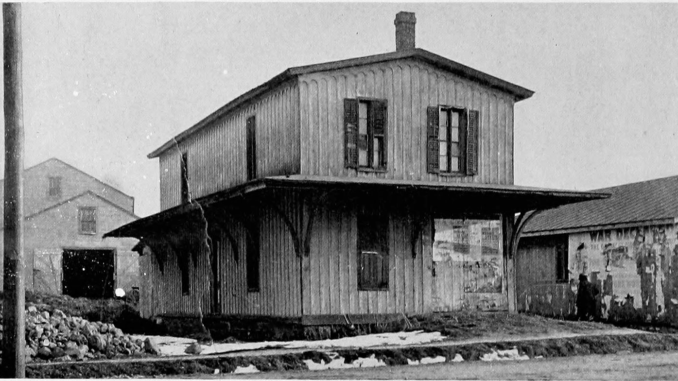
It’s been 160 years since the first train whistle roused the Northern Valley from its rural slumber, and the region started on a path toward becoming the suburb we know today.
The Northern Valley’s development can be linked directly with the arrival of the railroad. On May 26, 1859, the first train on the Northern Railroad line came down from Piermont, N.Y., southbound toward Jersey City. Originally Englewood and Closter were our only two local stops on the line, but by the turn of the 20th century there were also busy stations in Tenafly, Cresskill and Demarest, plus two more stops in Englewood.
The trip to New York City had previously taken hours in each direction by horse-drawn wagon and ferry. Isolated from the East Coast’s hub of commerce, the Northern Valley had been sparsely populated and little developed. Land could be purchased for a pittance. The small number of families all knew each other, and farming was their way of life.
With the coming of the railroad, land speculators realized the region’s potential. The man of the house could now commute to New York City by day, while his family could live far from the hustle and bustle, where the water and air were clean, and the vistas unspoiled. Speculators bought up acreage from farmers, subdivided it, and built homes from the railroad depots outward. The price of land increased exponentially. A new way of life took hold, and the Northern Valley became a suburb.
In her 1922 “Book of Englewood,” author Adaline Wheelock Sterling describes the scene on May 26, 1859 as the railroad opened.
“The twenty-sixth day of May, 1859, was the date of the awakening,” Sterling writes. “The scene was the terminus at Piermont. The occasion, the formal opening of the Northern Railroad. At an early morning hour the train, carrying officials and invited guests, got under way, with whistle tooting and bell clanging.”
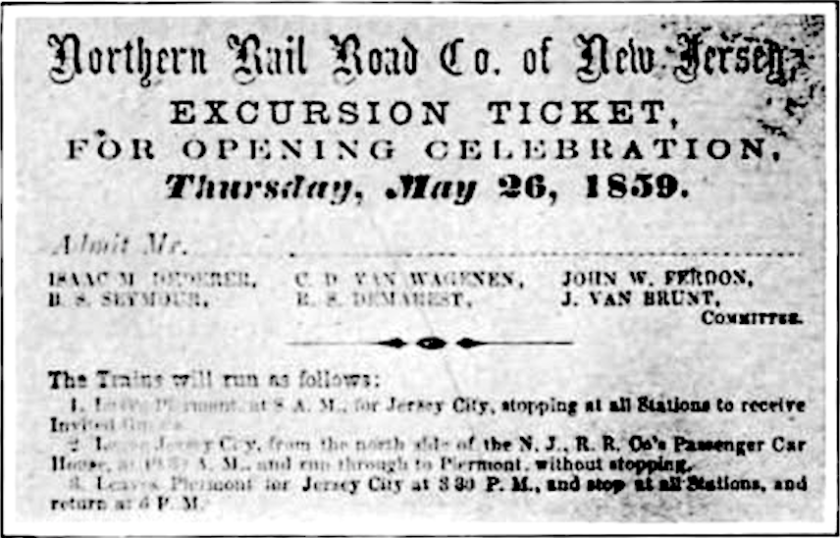
People from around the area gathered to watch the train take off. As Sterling explains, the younger folk seemed more excited about this new technology than did their highly skeptical parents and grandparents.
“Small boys whooped with delight as the wheels went round; young men cheered and young women waved their handkerchiefs. But the elders, regarding the expedition as a distinct flying into the face of Providence, shook their heads mournfully until the train disappeared from sight.”
The train proceeded down the line from Piermont, making stops at Closter and Englewood to pick up additional guests.
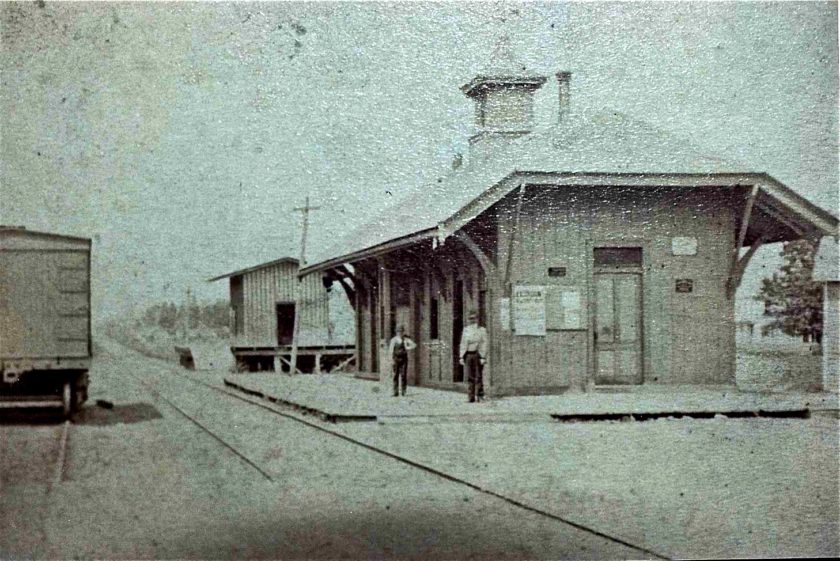
After reaching Jersey City the train made a direct run back to Piermont for a luncheon and speeches. At the end of the day, the train conveyed the guests back to their respective towns.
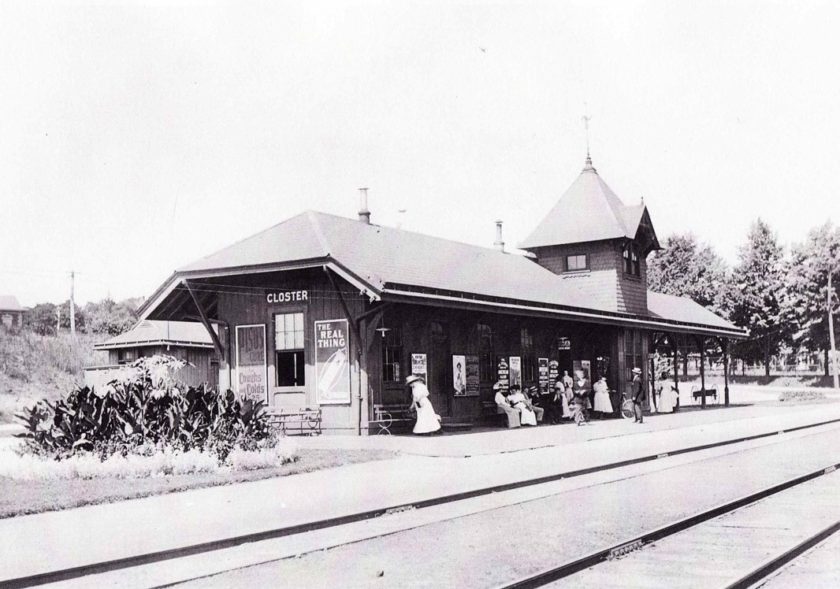
It’s no coincidence that a number of Englewood institutions got their start immediately after the coming of the railroad. The community’s first schools, one for boys and one for girls, each opened in 1859. The first church, First Presbyterian, opened in 1860. Also in 1860 came the Englewood House, a hotel on Engle Street (now the site of the city’s library) that was built to house newcomers to the village while their homes were being constructed. The year 1860 also saw the construction of a carriage factory, a steam sawmill, and the first business building on Palisade Avenue, which would house a general store and later Englewood’s first post office.

